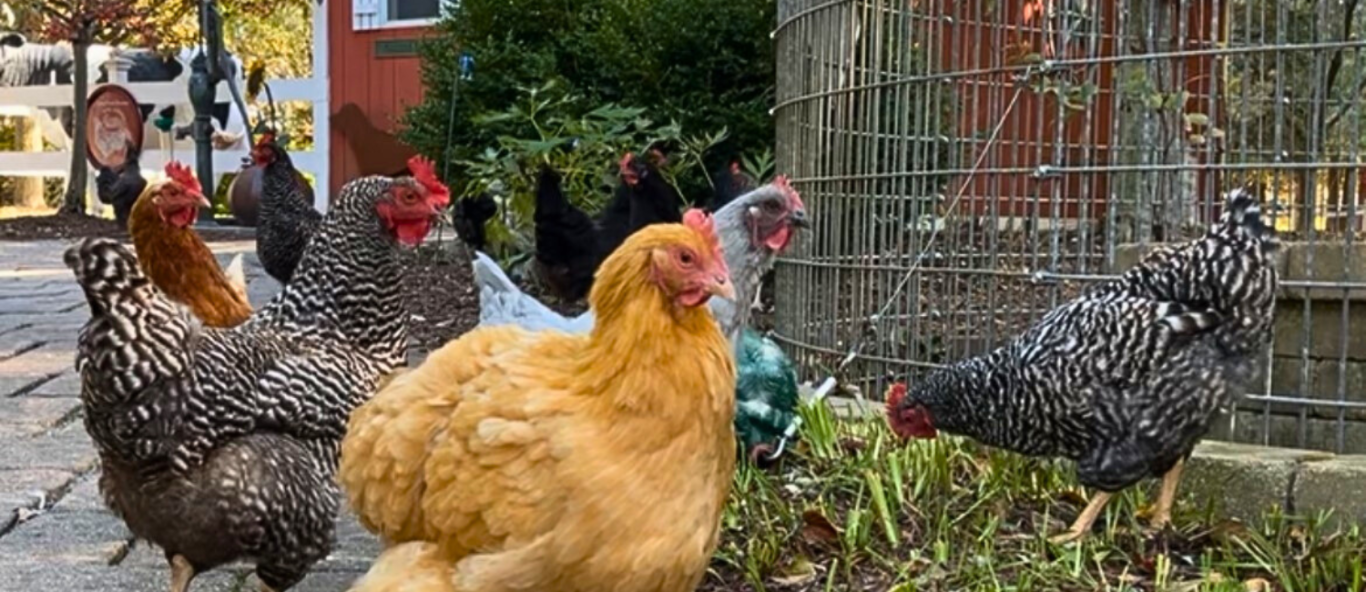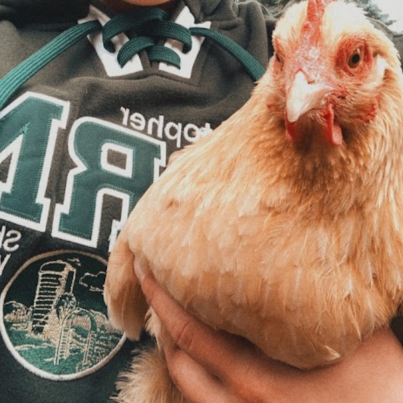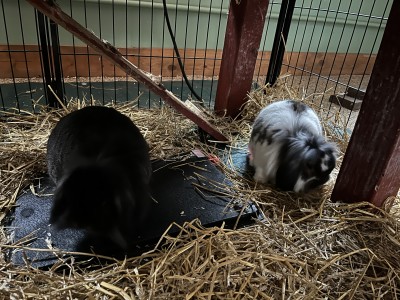Children’s Education Farm
Youngsters learn about farm life at our Children’s Educational Farm. Our mini scale working farm is complete with raised vegetable and flower beds, a chicken coop, apple orchard, barn classroom, rabbit and turtle pens, a compost tumbler, a little library, a pollinator display and a Great Lakes Watershed Mosaic. We believe agriculture to be very important and our educational farm helps young visitors learn about where food comes from and the value of nutrition. On top of all that, children also learn that farming can be a lot of fun!
Why are chickens so captivating? Ask the youngsters, they love them! Kids visiting the coop love to tell which one they like the best and give them names. We often like to let our chickens roam free during the day as this lets them live happier and healthier too! Click here see a short video of our chickens enjoying some time outside the coop.
Our flock consists of a mix of several heritage breeds to preserve diversity. Some of our breeds are over 200 years old. We collect eggs daily on the farm sometimes getting up to 1 dozen a day. Nothing beats an omelet breakfast from freshly laid eggs!
Chickens
Visitors flock to see the farm’s rooster and hens. Our hens lay up to 12 eggs a day for the perfect farm breakfast. We keep a mixed flock of several heritage breeds in our efforts to help preserve livestock diversity. Each breed has a unique history, some dating back 200 years or more from locations around the world. For more information click HERE.
Ducks
Inhabiting our ponds are domestic and wild ducks. Their quacking sounds are heard in the distance by visitors as they frolic in our waters. We have two types of domestic ducks: 9 Pekin ducks and a pair of Rouen ducks. The white Pekin ducks are the most popular domestic duck in the states, originally bred from the Chinese mallard. They live for 9 to 12 years reaching a mature size of 8 – 11 pounds. People like to raise them for meat and eggs, and they are considered very people friendly. For more information Click HERE.
Rabbits
Our two pet rabbits are a favorite with our young visitors. They love watching them frolic and dig holes. We keep Lop-eared rabbits, called so because of their big floppy ears. They are also the "Lionhead" breed, distinguished by a long "mane" of hair around their neck and ears. Click here to see a video of Pepe & Licorice enjoying a mid-morning snack in their indoor, winter exhibit.
They will return to their outdoor exhibit when the weather warms in springtime! Our little rabbits are a bit timid, but if you approach them gently enough, they might shake their whiskers at you! With fresh greens grown in the raised beds next to their home, our bunnies enjoy a good diet of organic produce. Got to keep the cage closed though - they are rascally rabbits and will take off given a chance.
Turtles
Painted turtles enjoy their summer swimming hole in The Children's Education Farm exhibit. Each spring, we find a couple turtles in the Farm House Pond and relocate them to the Turtle House exhibit. At the end of the summer season, we return the turtles to the Farm House Pond for winter hibernation.
Painted turtles are the most common turtle in Wisconsin. They are commonly found in marshes, ponds, and lakes.
Great Lakes Watershed
Where on this big pond are we? The Great Lakes Watershed Mosaic explains to children how and where we fit into our neighboring connected system of waterways. Kids use name plates of the surrounding states and lakes to learn about geography. They see how we are all part of a much bigger picture.
Educational Barn
Our educational barn is loaded with fun crafts, educational games and posters to teach kids about agriculture, animals, and geography.
School Field Trips
It brings us great joy to have youngsters come out to the Farm exploring and learning about the natural world. We love hosting school and youth group tours! Teachers are more than welcome to reach out to us about bringing classes here for field trips. For more information, please follow this link to the webpage dedicated to our field trips, HERE.
Raised Wildflower Beds
Alongside the Children's Education Farm are several raised wildflower beds which add colorful beauty and are essential to attract pollinators to our apple orchard and other nearby flowers. The beds are planted with a mix of wildflower seeds including California poppies, phlox, daisies, yarrow and coneflowers. We plant the seed mix in May and by the end of June the beds are filling in. Once the warm summer days start, the flowers take off and last for a couple months.










































